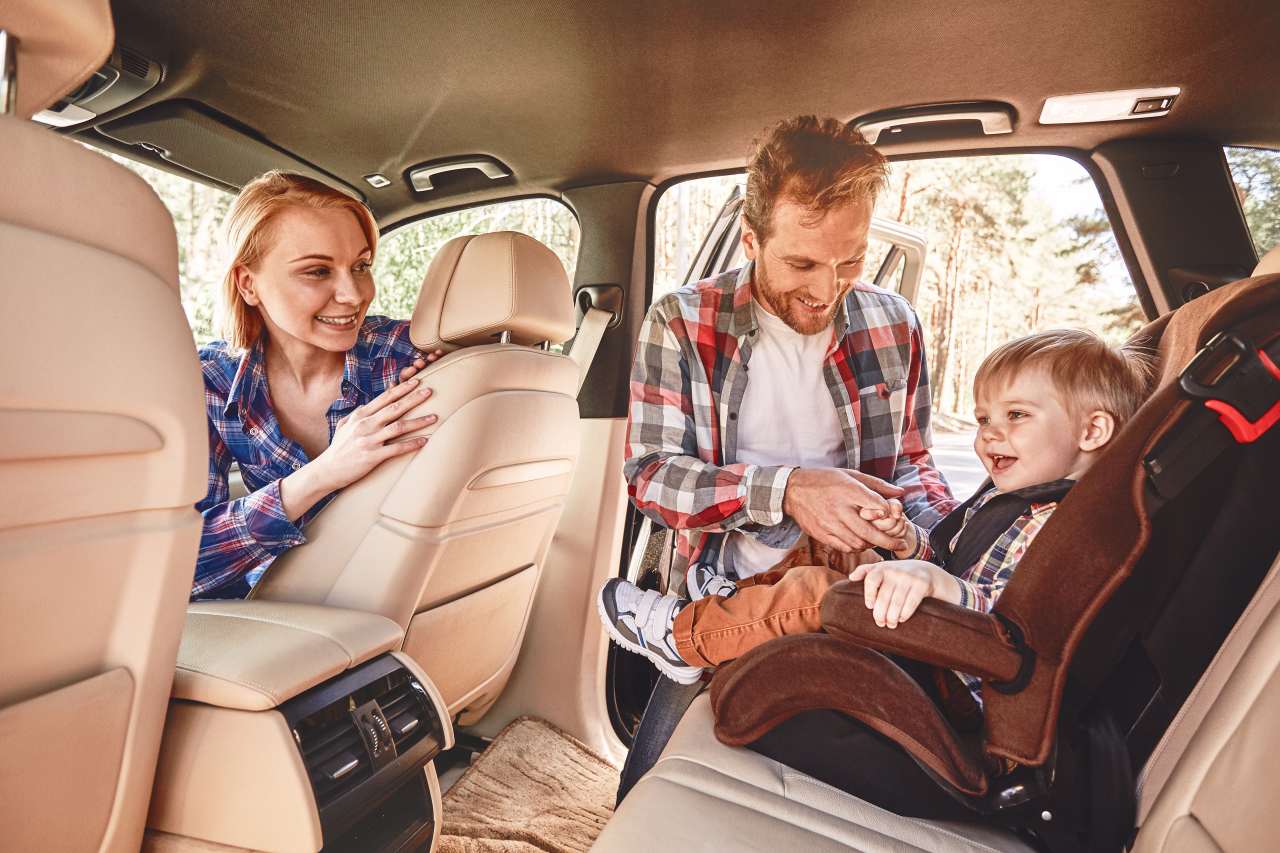Mark Oastler is spending three months with the Mitsubishi Pajero Sport GLS seven seat to see how it suits his family's needs.
Mitsubishi Pajero Sport 2020: GLS (4x4) 7 Seat
| Engine Type | Diesel Turbo 4, 2.4L |
|---|---|
| Fuel Type | Diesel |
| Fuel Efficiency | 8.0L/100km (combined) |
| Seating | 7 |
| Price From | $45,210 - $52,580 |
| Safety Rating |
|
Part 1: June 05, 2020
Discretionary spending is always the first to suffer in any global crisis, when cautious consumers suddenly restrict their spending to essential items only. In that context, the latest VFACTs figures from the Federal Chamber of Automotive Industries make sobering reading.
In April 2020, at the peak of Australia’s economic shutdown caused by the coronavirus pandemic, new car sales suffered a devastating 48.5 per cent drop compared to the same period a year before. That’s the largest single decrease of any month since VFACTs figures were first recorded in 1991. And in May 2020, although sales improved they were still down more than 35 per cent compared to a year earlier.
This comes on the back of two years of declining new car sales caused by a variety of “environmental, economic and political factors, along with tight credit lending restrictions,” according to the FCAI.
And thanks to a nationwide ban on nearly all outdoor recreational activities, it’s no surprise that the 26 contenders in the ‘Large SUVs under $70,000’ segment have been doing it tough. Which brings us to our latest long-term test vehicle, the Pajero Sport. It’s always been a strong competitor since its launch in 2016 and despite a year-to-date sales decline of more than 21 per cent compared to 2019, it continues to hold its ground against dozens of rivals which, in some cases, have suffered larger declines.
For example, with a 7.1 per cent share of this segment up to and including May 2020, the Pajero Sport currently outsells popular players like the Hyundai Santa Fe, Mazda CX-9 and Subaru Outback to name a few. And it’s outsold only by the perpetually dominant Toyota Prado (19.6 per cent) and Toyota Kluger (11.1 per cent) while nipping at the heels of Isuzu’s MU-X (7.4 per cent).
Given that it’s derived from Mitsubishi’s Triton ute, the Pajero Sport is also one of several heavy-duty SUVs that share similar high-riding ute parentage. And in that context, with 2272 units sold so far this year to the end of May 2020, it leads the Ford Ranger-derived Everest (2024), Toyota HiLux-derived Fortuner (933) and Holden Colorado-derived Trailblazer (867) and is outsold only by the Isuzu D-MAX-derived MU-X (2359 units).
So, when Mitsubishi Australia offered CarsGuide an MY20 Pajero Sport in GLS seven-seater specification for an extended three-month review, I was keen to get the keys to better understand why this high-riding wagon maintains its market position and relatively robust sales in such tough times. The extra driveway time allows our family of four (including two teenagers) to dig deeper into the real-world ownership experience.
.jpg)
For starters, it’s competitively priced against its ute-derived seven-seater 4x4 wagon rivals. The mid-level GLS, which slots between the base GLX and top-shelf Exceed, has a list price of $52,490. That’s $1700 more than a Toyota Fortuner GXL equivalent at $50,790, identical to the (now discontinued) Holden Trailblazer LTZ and cheaper than the Isuzu MU-X LS-U at $53,600. And it’s substantially cheaper than the Ford Everest Trend, with its choice of 3.2 litre ($60,290) or twin-turbo 2.0 litre ($61,790) engines.
The Pajero Sport’s five years/100,000km warranty, however, is the least competitive of this bunch. The Trailblazer, Fortuner and Everest all offer unlimited km on their five-year deals, while the MU-X raises the stakes with a unique six years/150,000km offering. Mind you, for a limited time Mitsubishi has upped its warranty to seven years/150,000km for all vehicles sold between May 1 and June 30. And since launch it’s had only had one minor factory recall, related to a potential corrosion point on the tailgate struts.
The Pajero Sport adheres to a common design theme shared by its ute-derived wagon rivals. They’re all body-on-frame with shorter wheelbases and lengths than the utes on which they’re based. And they all have multi-link coil-spring rear suspensions in preference to their ute parents’ harsher-riding leaf springs.
Its compact dimensions include a 2800mm wheelbase, 4825mm length, 1835mm height and 1815mm width. Even though the Fortuner has the shortest wheelbase and length of these five, the Pajero Sport has the lowest height and narrowest width.
Those two dimensions are most noticeable in the second row of seating, particularly for tall adults riding three abreast where there’s limited shoulder and head room. It’s tolerable for short journeys, but for any trip longer than the local shops the second row is definitely a two-seater only.
You might be surprised to know that tall adults like me can also squeeze into the third row, admittedly with my head touching the roof lining and knees at chest height. Again, you could do short trips with two adults sharing these rear stalls, but they’re best suited to young kids.
With its 2105kg kerb weight and 2775kg GVM, our test vehicle has a 670kg payload limit. It’s also rated to tow up to 3100kg of braked trailer but with its 5400kg GCM (or how much it can legally carry and tow at the same time) that would leave a legal payload of just 195kg, which could easily be used up by only two adults.A more practical ‘real world’ compromise would be to base the braked towing limit on the 2775kg GVM, which drops the tow rating from 3100kg to 2625kg but allows you to keep the full 670kg payload.
The 2.4-litre four-cylinder turbo-diesel shared with the Triton is the smallest displacement engine in this group, apart from the Everest’s optional 2.0-litre four which is ‘boosted’ somewhat with its unique twin-turbochargers.
Even so, with 133kW at 3500rpm and 430Nm at 2500rpm, the Mitsubishi’s outputs are competitive, which showcases its efficiency. In fact, the torque figure equals that of the Land Cruiser 70 Series’ 4.5-litre V8 turbo-diesel - which is more than 2.0 litres larger in displacement with four extra cylinders!
.jpg)
The smooth-shifting eight-speed automatic matches the engine’s refinement, with overdrive on seventh and eighth ratios for economical highway cruising and a manual-shift option using the steering wheel paddle-shifters.
Mitsubishi’s excellent Super-Select II 4WD system offers a unique choice of rear-wheel drive (2H), full-time 4WD (4H) which is great for icy or muddy roads, centre diff locked (4HLc) and centre diff locked low range (4LLc). There’s also a choice of four specific off-road drive modes to maximise traction and stability on gravel, mud/snow, sand and rock. And if that’s not enough to get you out of trouble, there’s also a rear diff locker.
The GLS’s standard equipment list is far from frugal for a middle-tier model, even though it misses out on the Exceed’s heated front seats, premium audio and sat-nav. People seem to either love or loathe the dramatic frontal styling. Either way, it’s a classy-looking vehicle with a tasteful blend of chrome and satin chrome finishes, 18-inch alloys with 265/60R18 tyres and matching spare, LED headlights/fog lights/DRL, privacy glass, side-steps and roof rails.
.jpg)
Inside there’s leather-appointed seats with power adjustment for the front two, plus a tilt-and-reach adjustable leather-bound steering wheel, leather-bound gearshift, dual-zone climate control with rear vents, side/rear window demisters, power tailgate, three 12-volt sockets, two USB sockets and a 220V AC power outlet, six cup holders, four bottle holders and numerous storage options among the highlights.
There’s also a six-speaker multimedia system with 8.0-inch colour touchscreen and multiple connectivity including smartphone link display audio, Apple CarPlay/Android Auto and DAB radio on the menu.
.jpg)
It has a five-star ANCAP safety rating (tested October 2015), seven airbags including front and rear side-curtains and a suite of active safety features headlined by a forward collision mitigation system, which is Mitsubishi speak for AEB. There’s also a reversing camera and rear parking sensors, plus three top-tether and two ISOFIX child seat anchorage points on the second row of seats.
Even so, the GLS does miss out on some useful safety exclusive to the Exceed including blind-spot warning, lane-change assist, rear cross-traffic alert, 360-degree camera and front parking sensors.
The second and third rows of seating, which feature split-folding function and recline adjustment, can be easily reconfigured to suit different requirements. There’s 131 litres of cargo volume behind the third row of seats (measured to the top of the backrest) which is handy for carrying small shopping loads. With the third row folded, load volume expands to 502 litres, which is great for larger shopping loads or carrying the family pets.
With the second and third rows folded, total load volume grows to 1488 litres (measured to the roof). That’s almost 1.5 cubic metres, which turns the Pajero Sport into a mini-van which can carry anything from a load of cardboard to the recycling centre, a mountain bike (lying flat), an outdoor furniture setting or many other things you may need to transport.
Women tend to like high-riding off-roaders because they provide a commanding view of the road and they feel solid and safe. That’s understandable and two major brownie points in the Pajero Sport’s favour as far as my wife is concerned, so we’re off to a good start.
She also loves how it looks and the supple ride of its four-coil suspension (make that four brownie points). Its short wheelbase and compact dimensions also make it easy for her to manoeuvre in traffic and slot into tight shopping centre carparks, where the power tailgate is also appreciated (that’s an even half-dozen!)
Overall, she’s found it easy to live with and pretty hard to fault so far. However, she does wish it had heated seats (she hates Melbourne winters) and that the central-locking switch on the driver’s door was illuminated at night, to make it easier to locate and activate.
[product:3d]{"url":"https%3A%2F%2Fcarsguide.captur3d.io%2Fview%2Fmitsubishi-motors%2Fmitsubishi-pajero-sport","headline":"Explore the Mitsubishi Pajero Sport in 3D","subtext":""}[/product]
When we collected the GLS it had 1476km on the odometer and in our first month of ‘ownership’ we added 1102km during the toughest Stage Three coronavirus restrictions. It made me realise how far we drive each week, even when its limited to essential shopping and work duties in the metro area.
Given the stop-start nature of this driving and that it weighs more than two tonnes, the Pajero Sport displayed good fuel economy. Mitsubishi claims a combined average of 8.0L/100km, but our own figure based on fuel bowser and tripmeter readings was 10.8L/100km at our first refill, after covering 518km. This improved to 9.9L/100km when we refilled the 68-litre tank for the second time, after covering another 584km.
So, the first month of ownership was pretty much as we expected. The Pajero Sport GLS is an excellent all-rounder and hopefully as coronavirus restrictions ease, we’ll be able to venture further afield to see how it performs away from the big smoke.
Acquired: May 2019
Distance travelled this month: 1102km
Odometer: 2578km
Average fuel consumption for May (at pump): 10.4L/100km
Part 2: July 06, 2020
Since my last report at the end of May, which capped our first month of Pajero Sport GLS ownership, we’ve covered another 1534km.
It’s been a frustrating time to ‘own’ a long-term test vehicle, given the punitive stage three COVID-19 restrictions that were in place during our first month. And then, when we were poised for a multi-day road trip through central western NSW and the ACT in late May/early June, with accommodation booked and driving distances carefully calculated, along comes Victoria’s second outbreak.
The increasingly colourful warnings from pollies north of the border, that NSW businesses should not deal with Victorian visitors (even though we live nowhere near the so-called ‘hot spot’ Melbourne suburbs), were far from words we needed to hear when it reached crunch-time in terms of being able to cancel our bookings without having to pay cancellation fees.
So, we had to bail at the last minute, which was a big disappointment for a Victorian family of four busting to break out of a long coronavirus lock-down (like thousands of others) with a good old Aussie road trip north of the border. So, apart from a couple of day trips to intrastate destinations we’ve previously visited (it's a small state), we haven’t had the chance to stretch the legs of the Pajero Sport GLS as far as we normally would.
.jpg)
So, the 1534km we’ve clocked up this month have again been mainly city and suburban driving with the odd day trip. During this time the fuel consumption has been consistent and predictable.
For example, our first tank of diesel for the month, which covered 514km with about 70km in reserve according to the range read-out, resulted in a combined average dash display figure of 11.7L/100km. However, our own number crunched from fuel bowser and tripmeter readings came in at a slightly lower 11.0L.
Our second tank, which covered 489km with about 100km in reserve, produced a lower dash reading of 9.3L but our figures were unchanged at 11.0L. June’s third and final tank added another 531km with a 9.1L dash reading, which compared to our own figure of 9.4L. So, given that the third and final tank run included more open highway running than the previous two, it explains the notable improvement in fuel economy.
Mitsubishi’s official combined figure is 8.0L/100km, so these higher ‘real world’ consumption figures (typically up to 3.0 litres higher than the official number) are about average for this type of vehicle when driven mostly in city and suburban environments.
Spare change
.jpg)
I took the opportunity to see how easy - or hard - it is to change the spare wheel/tyre. Why bother you ask? After all, tyres are so good these days, you never get punctures, right? In most cases, that's true. Modern tyre technology is remarkable but not infallible as I discovered recently, when a sharp wood screw drilled a sizeable hole through the tread of a near-new tyre on a friend’s car.
So, you never know when you might be stuck somewhere with no option but to change a flat tyre yourself. The Pajero Sport’s hydraulic bottle jack and vinyl bag of wheel-changing tools are neatly stored in an internal wall compartment next to the rear cargo area. Removing a floor panel provides access to a large wheel nut-sized bolt head, which when rotated anti-clockwise using the supplied wheel brace turns a small winch that lowers the spare wheel/tyre to the ground suspended on a chain.
The chain can then be removed and the spare dragged clear from underneath the vehicle. Next step is to use the wheel brace to crack the nuts loose on the wheel to be replaced before positioning the hydraulic jack under the rear axle housing (I always use a block of wood to stand these jacks on), clicking the three-piece crank handle together and then pumping the jack high enough to provide adequate clearance to change the wheel. This step-by-step process is then reversed, with the spare wheel/tyre and jack/tools easily stowed away again.
Although I couldn’t fault Mitsubishi’s hardware, I must say that this process could be beyond the physical capabilities of numerous drivers, given the hefty weight of a modern off-roader’s spare wheel/tyre. It takes considerable strength to overcome the friction caused by dragging such a large tyre across the ground when removing and replacing it underneath the vehicle. And it’s physically even harder to position the wheel vertically and centre one hole on a threaded stud with one hand, while trying to attach the first of six wheel nuts with the other!
On ya bike
It’s been important to maintain regular exercise during the pandemic and one of my favourite destinations for pedal power is the Lilydale to Warburton Rail Trail on the city’s eastern outskirts, much of which winds its way through scenic Yarra Valley farmland. Much of the trail was originally constructed for railway lines which have long since disappeared. You can join it at various points along the way, like the section between Mount Evelyn and Woori Yallock which I rode.
I naturally wanted to test if the Pajero Sport was versatile enough to carry my adult-sized mountain bike. With the second and third rows of seats folded flat and a little maneuvering of wheels and handlebars, the bike made a snug fit lying on its side with the seat resting on the plastic trim above the rear wheel housing.
Pop-up load anchorage points on either side of the cargo floor are ideally positioned for securing an elastic strap (or rope, adjustable straps etc) to keep the bike’s rear tyre in firm contact with the tailgate to hold it in position when driving.
.jpg)
The tailgate also provided some welcome shelter when the weather quickly changed (typical Melbourne) and it started to pelt down rain just after I’d returned from the ride. So, if you want to carry an adult-sized mountain bike, it will fit inside.
A Boxer four, but no Rex
.jpg)
Our two-year old Boxer ‘Hazel’ has also been enjoying numerous trips in the Pajero Sport, as we wanted to see how comfortable it could be for her riding in the cargo area.
With the third row of seats folded flat, there’s ample space for her to sit and watch the surrounding traffic or lie down if she prefers. The load floor’s flip-up anchorage points, which we used to secure the mountain bike, are also handy for securing her lead and harness. And the short-pile carpet trim is easy to vacuum clean of dog hairs to maintain a clean interior.
It can also easily get hot and stuffy for pets riding in the rear of wagons, so Hazel’s lack of panting tells us she appreciates the air conditioning vents in the roof on either side, which can be directed onto her by rear seat passengers who also have their own roof-mounted vents and fan-speed control that’s independent of the dash controls.
So, with only one month remaining, we have some more outings planned for the Pajero Sport. We were hoping to assess its towing ability, with the assistance of the good people at New Age Caravans, but given that our test vehicle was supplied without a tow-bar this won’t be possible. However, we will be testing its off-road credentials before we have to hand back to the keys.
Acquired: May 2019
Distance travelled this month: 1534km
Odometer: 4112km
Average fuel consumption (measured at pump): 10.4L/100km
Part 3: August 05, 2020
July was our third and final month with the Pajero Sport GLS and the most frustrating from a vehicle- testing perspective, as the Victorian government introduced even tighter COVID-19 lockdown measures early in the month which restricted all vehicle travel to the Melbourne metro area.
So, after cancelling our proposed interstate trip to NSW/ACT in early June, we found ourselves even more hobbled from early July, which is why we only managed to clock up 910km for the month, which was way under our May and June distances.
We covered another 550km with our first tank of diesel for July, with the dash readout claiming an average 9.5L/100km compared to our own figure calculated from fuel bowser and tripmeter readings of 10.5L. This was achieved entirely in city and suburban traffic.
Our second tankful took us to the end of the month, during which time we clocked up another 360km with half a tank remaining. This time the dash readout, which has seemed erratic at times, was claiming an average 11.2L/100km compared to own figure of 10.6L. On other words, our figures for July were virtually identical, while the dash display fluctuated by almost 2.0L/100km.
So, in three months we’ve clocked up a total distance of 3546km. Compared to Mitsubishi’s official combined average of 8.0L/100km, our real-world average was 10.6L/100km, which is enviable economy for a vehicle that weighs more than two tonnes and spent most of those 3546km in city and suburban traffic with minimal highway operation.
Holiday cruise
Our family of five (two adults, two teenagers and a dog) spent enough time on-board during several day trips, before the more severe lockdowns were imposed, to assess how comfortable the Pajero Sport GLS is for weekend getaways.
The quiet and refined 2.4-litre four-cylinder turbo-diesel it shares with the Triton is an excellent engine for this application, particularly its 430Nm of torque which equals that of the Land Cruiser 70 Series’ much larger 4.5-litre V8 turbo-diesel.
At highway speeds the equally refined eight-speed automatic, with its near-seamless shifting and overdrive on the seventh and eighth speeds, ensures low-stressed and economical cruising. In top gear the engine fairly lopes along with only 1600rpm at 100km/h and 1800rpm at 110km/h, yet still has plenty of useful pulling power at those revs. This showcases its flexibility, given that maximum torque is tapped further north at 2500rpm.
.jpg)
Noise suppression at cruising speeds is commendable and the ride quality is excellent, thanks to a well-engineered sprung-to-unsprung weight ratio that helps smooth out the bumps. On rougher secondary and unsealed roads, back seat passengers can feel the supple rear coil springs ironing out road irregularities with great effect.
However, like any of these high-riding 4x4 wagons, that same suspension compliance also creates considerable body lean through corners when pushed. However, it’s predictable, safe and far from ponderous if driven with a sensible amount of restraint. This is not a sports car.
As highlighted on our first month’s review in May, it has the lowest height and narrowest width of its ute-derived wagon competitors. For tall adults (or tall teenagers in our case) those two dimensions are most noticeable in the second row, which like grandstand seating is higher than those in front.
Although this extra height provides a clear view through the front windscreen, the penalty for tall passengers is that the roof lining is quite close to the side and top of your head, which increases your awareness of the low ceiling height.
.jpg)
Even so, to help counter this effect, each outer passenger has their own adjustable air-vent in the roof lining, with the rate of airflow governed by a central roof-mounted fan-speed switch that’s independent of the driver’s dashboard control.
The Pajero Sport’s narrowness is most noticeable in terms of shoulder room when travelling three-abreast. However, with only two seated in the second row, that’s not an issue. And when combined with the 60/40 split-fold design, which allows independent backrest adjustment, plus two USB ports and a 240-volt accessory plug in the rear of the console, it ensures comfortable cruising.
The third-row is strictly for primary schoolers if you’re travelling any further than the next postcode. However, we can confirm that two tall teenagers or adults can squeeze into the third row if need be, admittedly with heads touching the roof lining and knees at chest height. And they also have their own roof-mounted air vents, if things start to feel a bit claustrophobic.
Off the beaten track
Thanks to the COVID-19 lockdowns, there was somewhere between Buckley’s and zero chance of heading bush for some serious off-road adventuring, so I instead managed to squeeze in a few hours of testing at Melbourne’s 4x4 Training and Proving Ground at Mount Cottrell.
This outstanding facility offers just about every off-road obstacle you could ask for and, as its name suggests, is a great proving ground for 4x4 vehicles of every description.
Recent rains had created lots of sticky mud and we were initially concerned that the road-biased tread patterns of the standard-issue 265/60R18 tyres were quickly going to clog. Well, that’s exactly what did happen, but I had no cause for concern as the Pajero Sport took it all in its stride.
.jpg)
Its short 2800mm wheelbase with tight 11.2 metre turning circle, 30 degrees approach angle, 23.1 degrees ramp-over angle and 24.2 degrees departure angle, 218mm ground clearance, 700mm wading depth and supple four-coil suspension are all factors in its confident off-road ability, combined with Mitsubishi’s unique Super-Select II 4WD system which offers a choice of rear-wheel drive (2H), full-time 4WD (4H), centre diff locked (4HLc) and centre diff locked low range (4LLc).
There’s also four specific off-road drive modes to choose from, which maximise traction and stability on gravel, mud/snow, sand and rock. And if that’s not enough to get you out of trouble, there’s also a rear diff lock.
.jpg)
I didn’t bother to lower the tyre pressures to increase grip, as I wanted to assess how it performed when being driven straight off the bitumen. We tackled inclines and declines up to what felt like about 45 degrees (you know, when everything slides off the seats etc), water crossings, deep sand and lots of long muddy stretches.
Given the boggy conditions, for most of the test I used the mud/snow drive mode and 4x4 hi-range with the centre diff locked, which provided an even distribution of drive between the front and rear axles and the momentum needed to power confidently through the goop.
.jpg)
I only engaged low range with centre diff locked for a short time, to sample its impressively low 46:1 crawler gear. I did this after deliberately stopping half-way up a steep incline, to see if it could continue from a standing start. When I eased on the power, the front tyres initially grappled for traction but by turning the steering wheel and easing off the throttle a tad to find some more bite, she found her footing and powered to the top. That was impressive.
Rear diff lock? I didn’t need it. And given how well the Pajero Sport performed on its road-biased tyres, it’s clearly an off-roader with ample capabilities for most off-road adventurers.
Verdict
Despite the coronavirus restrictions during the past three months, we still managed to get a good overview of how this rugged seven-seater performs in some of the many roles expected of it by busy families.
Unfortunately, our test vehicle was not equipped with a tow-bar because we would have liked to see how it performed with a caravan, horse float or other heavy trailer in tow. Maybe next time.
Sure, the cabin can feel a bit squeezy for tall passengers due to its compact width and height, but those smaller dimensions can also be an advantage for others in terms of ease of parking and general manoeuvrability in urban environments.
Like any vehicle choice, it’s horses for courses. And judging by the Pajero Sport’s consistently robust sales performance, there’s plenty of Aussies happy to have a punt on this rugged and likeable all-rounder.
Acquired: May 2020
Distance travelled this month: 910km
Odometer: 5023km
Average fuel consumption (at pump): 10.5L/100km
Average fuel consumption over three months (at pump): 10.6L/100km
Pricing Guides




.jpg)
.jpg)
.jpg)
.jpg)
.jpg)
.jpg)
.jpg)
.jpg)
.jpg)
.jpg)
.jpg)
.jpg)
.jpg)
.jpg)
.jpg)
.jpg)
.jpg)
.jpg)
.jpg)
.jpg)

.jpg)





































.png)








.png)









.jpg)
.jpg)


.jpg)
.jpg)
Comments